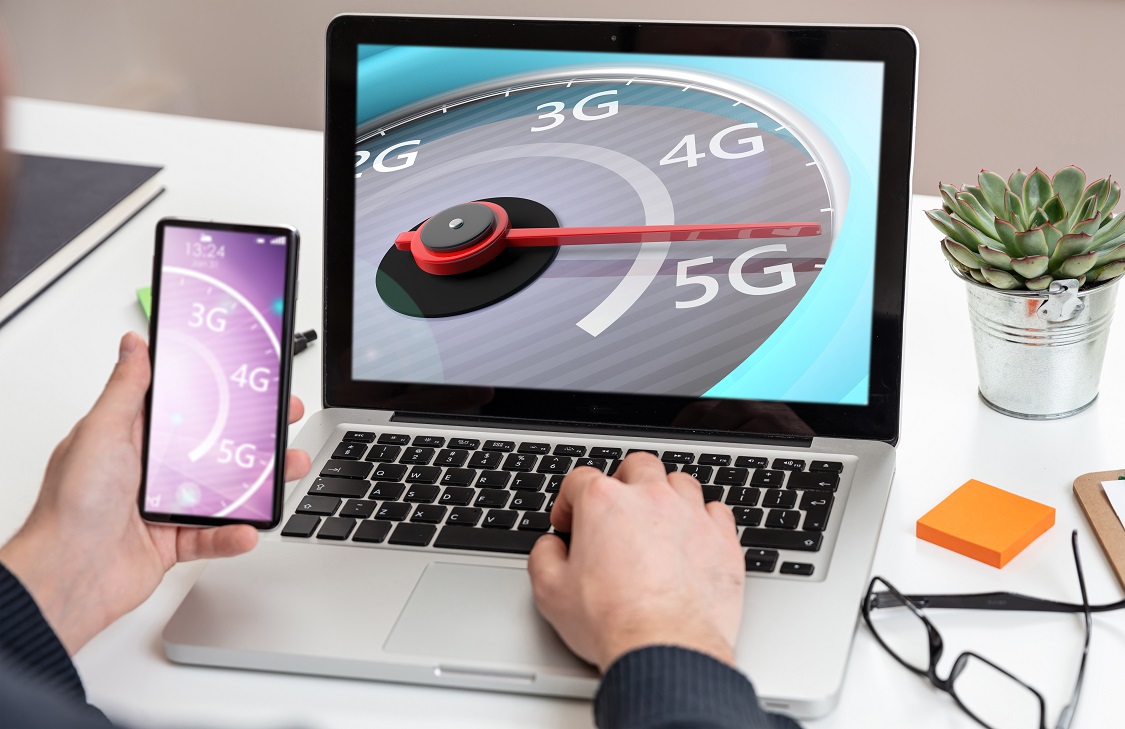You’ve probably heard about hybrid working – mixing the best of the physical and digital worlds in a way that suits every individual personally. For most UK SMBs, the reality of working through the early stages of the pandemic and lockdowns wasn’t hybrid. Your staff either worked remotely or stayed on physical premises, depending on the nature of your organisation.
The new reality is, we’re all still learning and experimenting on hybrid work.
With 71% of UK workers telling Microsoft that they want flexible work options to stay in place in their organisations after the pandemic, it’s likely that your employees’ expectations have changed for good. And each will have their own views, as nearly two thirds (62%) of those same workers surveyed were also looking forward to more in-person time with their team.
It’s clear that that there’s no ‘one size fits all’ on hybrid working. Your new, hybrid workplace will need to be designed with the wellbeing of your people at the heart of your approach. With the rise of ‘The Great Resignation’ trend in the UK, and 41% of the UK workers telling Microsoft they were likely to consider leaving their job this year, the war for talent is heating up. Rob May is a leading cybersecurity expert, and founder of IT support and managed services provider Ramsac. On the transition to new ways of working, he explains, “I struggle with the concept of new normal, as for me normality has always been whatever is happening today. The role of a business leader (whatever the size) is to respond and adapt to customer and employee needs and provide the best possible solutions to those stakeholders.”
You’ll need to provide a trusted, secure and modern experience for every employee, to remain competitive and attract and keep the best talent in the new world of work.
Staying connected with co-workers and customers
As an SMB, you’ve always been ahead of the game in reshaping work around individual roles, preferences and personal lives – offering a flexible and more personalised workplace experience than larger organisations.
Technology has been evolving as well to bring your people together – supporting collaboration, culture and connection among your employees, no matter where they are. “Throughout Covid we witnessed differing capabilities and the ability to work efficiently within companies depending on where businesses were in their journey to the cloud and the provisioning of mobile/flexible working,” said May.
At Microsoft, we accelerated our technology innovation through the pandemic to respond to what SMBs needed. We created one simple, secure package for SMBs, to help you make a seamless transition to hybrid working. Microsoft 365 Business Premium is our single solution to run your business securely from anywhere. It brings together best-in-class Office apps and powerful cloud services like Microsoft Teams, with comprehensive security that helps protect your business against the rising cyber threats associated with hybrid working.
Staying connected with co-workers and customers
Remote work has upsides, but the importance of human contact remains critical. We’re social animals and we want to get together, bounce ideas off each other, and experience the energy of in-person events.
But in a hybrid workplace, not everyone will be together on the same days, and you have a responsibility to make sure everyone has the same positive experience of work. That’s important, whether your staff are in an office; have specific accessibility requirements; are working remotely balancing personal commitments; or are on the frontline, conducting business out in the field.
We’ve been working on a few things to enable an environment of seamless collaboration. Microsoft Teams is our collaboration platform designed to bring everyone closer. Whether it’s chat, calls or video, anyone can engage at any time. Documents, photos, videos, chat history and meeting notes are always there, so your staff can keep track of conversations, wherever they are working from.
We’ve recently announced a new Teams Rooms innovation that will recognise people in a room and show their profiles and independent video feed, so that if you’re remote, you don’t just have a room full of faces you don’t know. And people don’t have to bring their laptops to the meeting room – they can get the full experience on the Teams mobile app, where they can see the meeting chat and send reactions as if they were joining remotely.
Another simple example is in Outlook – you can now tell your colleagues whether you’re working from home or in the office and you can RSVP an invitation with the option to say whether you’ll go in person or remotely.
Being productive from anywhere
The pandemic has proven that organisations can trust their people to be productive wherever they are. Now you need the technology to enable them to be productive wherever they are.
You’re possibly using Microsoft Office apps like Word, Excel and PowerPoint in your business, but where are your files stored? It’s not uncommon for files to be saved in places easily forgotten in complicated filesystems. Are they on individual laptops or on your office server? Can your team access their files from anywhere, at any time? Can they collaborate simultaneously on single files from different places? Can they easily be shared with other stakeholders in a way that is securely compliant?
This is where the cloud comes in. Working on files saved automatically into cloud storage takes much of the friction away from hybrid working for your team. Microsoft 365 Business Premium includes a huge 1 terabyte (that’s 10 million 100KB Word documents!) of cloud storage per user on OneDrive, so that your staff will always work on up-to-date versions of files, in up-to-date versions of their favourite apps, and the whole team can co-author files in real time—and roll back to previous versions for whatever reason.
“There’s no doubt in my mind that there were plenty of organisations that had bought in to Microsoft 365 already, but users were still only using their tried and tested applications (Word, Excel, PowerPoint, and Outlook),” May notes. “There was immense power and satisfaction in the realisation that as they needed to solve different remote/hybrid working challenges, they already had the solutions within the Microsoft 365 platform and it was simply a case of education and training to enable and empower their users.”
Securing the hybrid workplace
Working from multiple locations through multiple connections can open your hybrid workplace to new cyber security risks without the right tools or support.
COVID-19 has made cyber security harder for small businesses, according to the Department for Digital, Culture, Media & Sport. With resources stretched, fewer small and micro businesses reported having up-to-date malware protection year on year (83% versus 87% in 2020) and network firewalls (77% versus 82% in 2020).
You may be rightly asking: ‘How do we protect ourselves from cyber risks, without sacrificing the experience for our people or the productivity of the company?’
Simplicity will be key. For instance, with Microsoft 365 Business Premium, you can centrally manage and protect company-issued and employee’s personal devices accessing business information and services. The recently announced Microsoft Defender for Business not only provides next-generation Anti-virus to protect Windows, Mac, iOS and Android devices from external threats like malware and ransomware but also automates investigation and remediation in case of a breach, so you can focus on your business. .
Preparing for and securing the hybrid workplace may seem daunting, but it shouldn’t be. With the right partner and technologies to help you navigate the uncertainties, you can easily futureproof your business and ensure you remain productive, connected, and can continue to drive growth – whilst giving your employees their best work experience.
For more information on Microsoft Teams and to try for free, go to aka.ms/hybridsmb.







